May 16th 2007

Story by Simon Grand.
|
On the eve of the Mille Miglia�s 80th anniversary, Automotive Design students from Turin�s Istituto d�Arte Applicata e Design (IAAD) are already imagining the centenary�
Turin�s position as the world�s car design capital may have been challenged during the first century of automotive development but the crown has never been stolen. A close look at Turin�s recent activity reveals the evidence. Fiat�s ongoing renaissance is the most obvious sign but behind the scenes of the resurrection of Italy�s automotive industry are many skilled companies, suppliers and craftsmen. These organizations are supplied with talent by one of the world's most influential Transportation Design schools: the Istituto d�Arte Applicata e Design (IAAD), Turin.
The first Transportation Design course in Italy, and now the only course of its kind recognised by EABHES (The European Accreditation Board of Higher Education Schools) opened its doors in 1978 and hasn't looked back. Close links with the international automotive design community play a key role in IAAD's continuing success story which for 2007 includes new premises and a Master's Degree course as well as the 3 year BA course that has developed over 30 years. Recent collaborations have included projects with Renault, Ducati, Honda, Lancia, Yamaha and Piaggio, all of which included the development of three dimensional models.
The latest challenge of the 2nd and 3rd year students is a project entitled "Mille Miglia 2027". The famous Italian road race will celebrate its centenary in 2027 and the task given to the students by course coordinator Simon Grand was to envision the kind of vehicles that would participate in the event, taking into consideration the nature of the race and the values of the marque chosen. As with the Mille Miglia itself, the project has been tackled by participants of various nationalities.
The project that followed this briefing included in-depth research and concept development leading to final presentation renderings. A total of 23 students took part in the project, of which a few have been chosen to show here.
Vist the Institute's
website.

Alfa Romeo 'Duetto' by Fabio Ricupero (2nd year):
Combining the spirit and sportivity of Alfa Romeo with the ever advancing world of alternative energy. A high powered Barchetta that uses a combination of petrol and electric engines.
|

Alfa Romeo 'Nautica' by Piotr Degler Jablonski (2nd year):
Inspired by yachts and aerodynamic forms the 'Nautica' visualises its movement with an advanced, leaning suspension system. Lightweight composite materials and electrical power allow the car to be environmentally responsible.
|
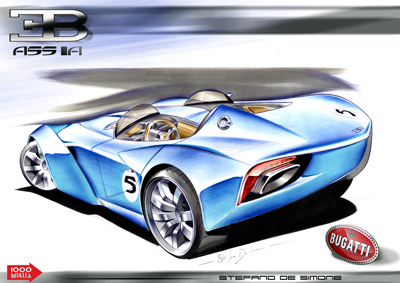
Bugatti �Assia� by Stefano De Simone (2nd year):
Transforming the precious and noble qualities of the Bugatti marque into a valid and competitive modern day racing car.
|
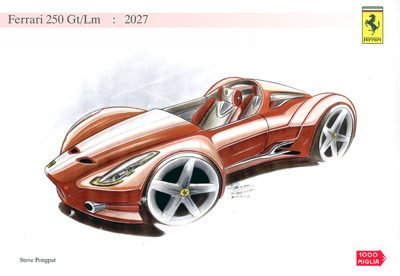
Ferrari �Mille Miglia� by Pongpat Taechasupatkul (2nd year):
Expressive forms and sensations of Ferraris past were key in giving this 2 seater racing car the correct DNA.
|
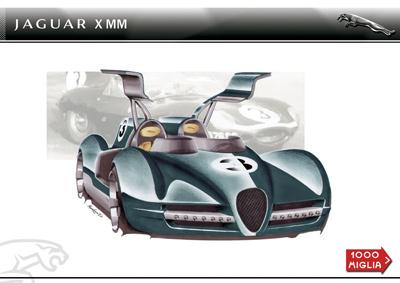
Jaguar 'XMM' by Roberto Calderon Turegano (2nd year):
Combining classic design elements with technical innovation, this hydrogen powered sports racing car aims to carry Jaguar's marque values into the future
|
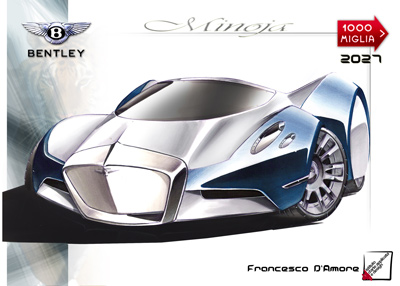
Bentley �Minoja� by Francesco D�Amore (2nd year):
A powerful and futuristic supercar that doesn�t betray the marque�s traditions.
|
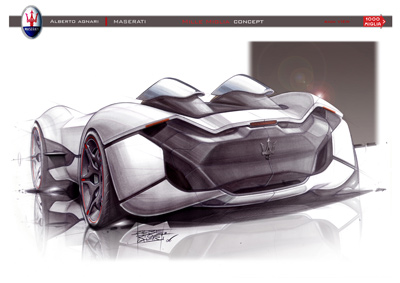
Maserati �Red Arrow� by Alberto Agnari (3rd year):
Futuristic forms combine with traditional �long-bonnet� proportions in this 8 cylinder racer.
|
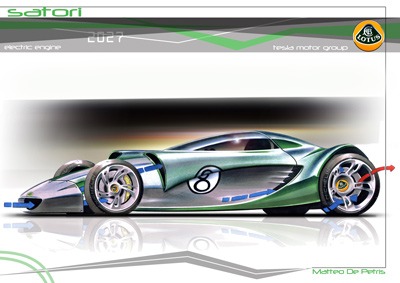
Lotus �Eva� by Lotus �Satori� by Matteo De Petris (2nd year):
Aerodynamics and light weight were the driving forces behind this electrically powered Lotus, taking advantage of the latest electric motor technology of Tesla.
|
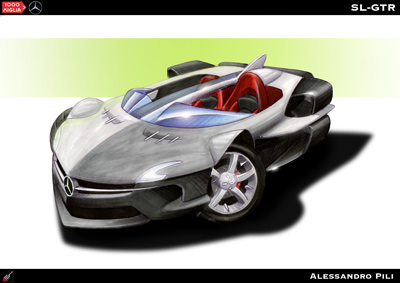
Mercedes 'SL GTR� by Alessandro Pili (3rd year):
An emotional vehicle both to look at and to drive, this fuel cell powered racer has no compromises.
|



